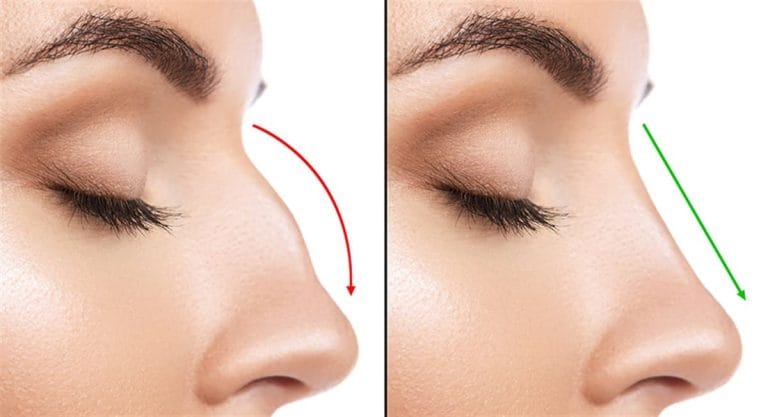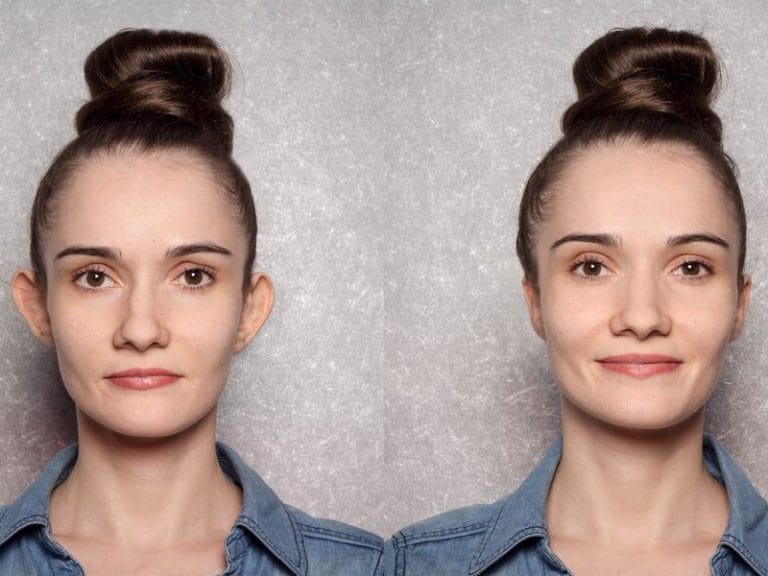The deep plan face lift process has become an important choice for many individuals who want to get a young and healthy appearance. In this article, we will focus on what a deep plan face lift surgery is, how we perform revisions and what deep plan face lift methods can get the best results. In addition, we will help you learn more about deep plan aesthetics by talking about the advantages of this aesthetic process and disadvanturs. After the procedure, we will discuss the relationship with different facial rejuvenation methods with the deep plan –stretching recommendations that you need to apply after the procedure. Come on, let’s explore these issues together!
- Definition of deep plan face lift surgery
- Deep Plan Face Lift Methods and Application Stage
- Deep Plan Aesthetics: Advantages and Disadvantages
- Deep Plan Post -Stretch Maintenance Recommendations
- The relationship between face rejuvenation methods and deep plan face lift
- Frequently Slipped Questions Thererefore, it is important for each individual to choose
Definition of deep plan face lift surgery
Deep Plan Facial Lift surgery is an effective aesthetic surgical procedure for reducing the symptoms of aging. This method affects the deep structures of the face and aims to minimize the loss of sagging, wrinkle and volume of the skin. In general, the face lift processes focus on the upper layer of the skin, while the deep plan face lift process intervenes in deeper tissues. Therefore, the results obtained in the lower layers of the face provide a more natural and permanent appearance.
This method has become popular in the field of facial rejuvenation in recent years.This technique, also called deep plan aesthetics, is less invasive than classical face lift methods and may require less healing time. In the application process, to reach the deep tissues of the face, the surgeon usually makes small incisions. Since these incisions are found in hidden areas such as behind the ear, it does not leave a remarkable aesthetically remarkable trace.
Below are a table that summarizes the basic features and benefits of deep plan face lift:
| Feature | Explanation |
|---|---|
| Depth of intervention | It reaches deep tissues and corrects sagging and wrinkles. |
| Natural appearance | It provides a younger appearance by reclaiming the volume loss on the face. |
| Healing time | It usually requires a shorter recovery time. |
| The privacy of traces | It traces thanks to small incisions, usually appears less. |
| Long -term result | The repair of deep structures increases the permanence of the results. |
As a result, deep plan face lift surgery, facial rejuvenation and aesthetics, providing an innovative approach to help individuals get a younger and more vivid appearance. Since this surgery should be performed with both surgical skills and correct techniques, it should be performed by an expert aesthetic surgeon.

Deep Plan Face Lift Methods and Application Stage
Deep Plan Face Stretching Surgery is an aesthetic procedure for reorganizing and stretching the deep tissues under the skin. The implementation stages of this process are very important and contain several different methods. Our aim is to increase skin elasticity and young appearance.
Deep Plan Face Lift Methods
The deep plan face lift process is performed with several different techniques. Each of these methods has its own advantages. Here are the most common deep plan face lift methods:
| Method | Definition | Advantages |
|---|---|---|
| SMAS (Superficial Muscular Aponeurotic System) Germe | The technique that directly affects the muscle structure on the face. | More natural appearance, long -term effects. |
| More natural appearance, long -term effects. | Minimal invasion made with small incisions and on the saint surface. | Fast healing, less trace stay. |
| Endoscopic face lift | A less invasive method made with the help of equipment. | Less trauma, minimal healing time. |
Implementation phase
The deep plan face lift process begins with anesthesia of the area with anesthesia. General anesthesia or local anesthesia is preferred and the comfort of the patient is provided. The surgeon then opens a certain incision depending on the selected method. After the pouch is taken, the deep tissues at the bottom of the hundred and the necessary stretching operations are performed. Here are the main lines of the application phase:
- Preparation: Pre -surgery evaluation and necessary examinations are made.
- Anesthesia: Appropriate type of anesthesia is applied;Local or general.
- KESS: The incision is opened from the appropriate points according to the method.
- Tissue stretching: Skin and muscle tissue at the bottom of the face are stretched.
- Closing: The incision places are covered with aesthetic stitches.
After these stages are completed, the patient’s condition is observed and the necessary monitoring process is initiated. After the procedure, deep plan is allowed to follow certain recommendations for our patients for care after face lift. All these stages are important in terms of both aesthetics and health and greatly affect the success of the results.
As a result, the natural appearance and long -term effects obtained by these methods are one of the main reasons why deep plan aesthetics are preferred. When combined with facial rejuvenation methods, the effects become more evident.
Deep Plan Aesthetics: Advantages and Disadvantages
The deep plan face lift process is an application that becomes popular and has an important place in the field of aesthetic surgery. However, before choosing this method, it is necessary to evaluate the advantages and disadvantages well. In this article, we will examine these elements in detail about deep plan aesthetics.
Advantages
Long -term effect: Compared to other face lift methods, deep plan face lift methods target the structures under the skin, the results are more permanent. It can usually maintain its effect between 5 and 10 years.
Natural appearance: After the operations performed with this method, the facial features get a more natural appearance. Deep interventions under the plan increase the elasticity of the skin to achieve a more vivid appearance.
Stretching and fullness: In addition to the sagging on the face, it is also very effective in recycling the lost fullness. Thus, not only face lift, but also fullness is performed.
Disadvantages
| Disadvandages | Explanation |
|---|---|
| Long healing process | There is a longer recovery process than other face lift methods. Although patients usually begin to recover within 2-3 weeks, full results may take several months. |
| Risk of surgery | There are risks carried by each surgical procedure. Infection, bleeding and complications due to anesthesia may occur. |
| Cost | The cost of this process is higher than other facial rejuvenation methods. It can vary between approximately 15,000 TL – 30,000 TL. |
Conclusie
As in every decision, it is important to act by considering the advantages and disadvantages of deep plan aesthetics. While the results of the surgery are permanent and provide a natural appearance, many people prefer this method;Factors such as the length of the healing time and cost should also be taken into consideration. Before the procedure, it will be the healthiest approach to decide by discussing with an expert aesthetic surgeon and evaluating our personal health status and expectations.
Deep Plan Post -Stretch Maintenance Recommendations
Maintenance after deep plan face lift is critical to ensure that patients get the best results. This stage is extremely important to maintain the effects of surgery and minimize slight side effects. Let us examine the main elements that should be considered in the postoperative process.
The first days after surgery
We should pay attention to the following points in the first days after surgery:
- Rest: Relaxation in the first days after surgery will accelerate the healing process.
- Cold Compress: It may be useful to apply cold compresses to the facial area to reduce swelling.
- Sleeping at high: Sleeping by keeping your head high helps to reduce swelling.
Drug use
We should use the prescription drugs recommended by our domain regularly. These drugs are very important because of painkillers and infection preventive properties. We should also pay attention to the following points:
- Regular use of antibiotics: Minimizes the risk of infection.
- Timely removal of painkillers: Reduces discomfort and provides comfort.
Activity and exercise
It is important to avoid intensive activities in the first few weeks after surgery. However, light walks are useful to increase blood circulation and help the healing process. Below you can find some suggestions about activities:
| Activity | Duration | Notes |
|---|---|---|
| Light walks | 20-30 minutes a day | Postoperative 1. after a week |
| Heavy sports | 4-6 weeks | After full recovery |
| Facial expressions | 2 weeks | Light expressions should be preferred |
Skin Care
It is necessary to pay attention to our skin care routine, to protect the health of the skin and to support deep plan aesthetics. The skin may become sensitive after surgery, so:
- We should use gentle cleaners.
- We should use gentle cleaners.
- Sunscreen creams should be used to protect directly from direct sunlight.
Tracking Appointments
Finally, participating in regular follow -up appointments is of great importance for the control of the healing process. Our communication with our physician will be useful for rapid intervention if there is any sign of any problem.
By following these suggestions, we can benefit from all the advantages we have obtained as a result of deep plan face lift. Let us not forget that the healing process of each individual is different;For this reason, it will be the healthiest approach to fully comply with the doctor’s advice.
The relationship between face rejuvenation methods and deep plan face lift
Facial rejuvenation methods include various techniques applied to reduce the effects of aging over time and restore the young appearance of the skin.The deep plan face lift process is one of the most effective and permanent ones of these methods. However, there is a significant relationship between deep plan face lift and other facial rejuvenation techniques. In order to better understand this relationship, it is important to compare face rejuvenation methods and deep plan face lift methods.
First of all, deep plan face lift surgery, stretching the support tissues under the skin, making the facial features clear and minimizing marks of aging. Other facial rejuvenation methods are usually limited to superficial interventions. From the table below, we can compare the basic features of both methods:
| Facial rejuvenation methods | Deep plan face lift |
|---|---|
| It is usually applied superficially. | It reaches deep tissues and gives effective results. |
| It has a short recovery time. | The healing process is longer but permanent. |
| It contains temporary solutions such as filling, botox. | Provides a permanent and natural appearance. |
| It is less invasive and the pain level is low. | It requires surgical intervention, but provides more effective results. |
Deep plan aesthetics provide general rejuvenation on the skin, while facial rejuvenation methods are mostly directed towards certain regions. For example, filling applications provide a young appearance by increasing the fullness on the cheeks, while deep plan face lift offers more significant improvements in the jaw line and neck area. Therefore, the general structure and volume of the face becomes balanced after deep plan face lift surgery and gives a more aesthetic appearance.
As a result, deep plan face lift process and other facial rejuvenation methods have complementary features, even though they have different goals. Our suggestion is that they should be evaluated together with other methods, considering the deep plan face lift process. Thus, we can protect the general youth of the face and achieve more effective results. Before choosing any facial rejuvenation method, we strongly recommend interview with a specialist. In this way, it will be easier for us to find the most suitable solution for our needs.
Frequently Slipped Questions Thererefore, it is important for each individual to choose
What is deep plan face lift?
The deep plan face lift process is a surgical technique performed in the lower layers of the face, especially in deep tissues. With this method, it is aimed to remove the looseness on the face area, to rejuvenate the contours and to achieve a more tight appearance of the skin. Unlike traditional face lift methods, the deep plan technique is more deeply intervened in the muscle and tissue structure under the skin, the results are longer and close to natural.
Who is suitable for face lift?
The face lift process is generally recommended for individuals aged 40 years and older. However, with age, those who experience the structural changes of the face early can also benefit from this operation. Since each individual’s skin condition and needs are different, it is necessary to discuss with an aesthetic surgeon in order to evaluate the suitability of the procedure. The surgeon will create the most appropriate treatment plan by evaluating your face structure, skin elasticity and general health status.
How long does the deep plan face lift process and what is the healing process?
The deep plan face lift process usually takes between 3 and 5 hours. After the procedure, patients usually fall into a healing process that requires staying in hospital for 1 night or to be under observation for a short time. In the first few days, swelling and bruising may occur, while these symptoms are greatly reduced within 10 days. The full healing process may vary from person to person, but usually return to normal activities within 4-6 weeks.
What are the risks of deep plan face lift?
As with any surgical procedure, deep plan face lift process has some risks. These;infection, bleeding, anesthesia -related reactions, asymmetry and wound healing problems. However, these risks can be minimized when performed by an experienced surgeon. It is also importent to follow a de detailed assessment before the operation and a proper process.





